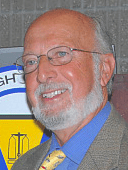Richard A. Durst
Professor Emeritus of Chemistry
Dept. of Food Science & Technology
Cornell University
Fellow (and Member of the Presidium) of the European Academy of Sciences and Fellow of the International Union of Pure & Applied Chemistry
E-mail: rad2@cornell.edu
B.S. (with highest honors, graduated 4th in a class of 514 students), Chemistry (minor: German), University of Rhode Island, 1960
Ph.D., Analytical Chemistry (minor Biophysics), Massachusetts Institute of Technology, 1963
Durst joined the Cornell faculty in 1990 as Professor of Chemistry. He became Chairman of the Dept of FS&T in 1999 and Director of Cornell Institute of Food Science in 2000. He previously taught at Pomona College, Boston College and the University of Maryland. Before coming to Cornell, he served as Research Chemist, Group Leader, Section Chief, and Deputy Director in the Center for Analytical Chemistry at the National Institute of Standards & Technology (formerly the National Bureau of Standards). In 2006, he retired and is currently Professor Emeritus of Chemistry working as an expert witness in pharmaceutical litigations, and serving on various professional and governmental committees.
Research Interests
Durst’s interests covered a broad range of analytical techniques including electrochemistry, spectroscopy, and separation science. His specific research interests included the application of biological recognition (antibodies, biological receptors and nucleic acid probes) and pioneering the use of liposome amplification strategies to the development of biosensing devices for extra-laboratory screening. Flow-injection analysis techniques, and subsequently, microfluidic systems, using regenerable immunoreactors and marker-loaded liposomes, were also used to develop automated bioanalytical systems for laboratory-based analyses of clinical analytes, environmental pollutants and food contaminants. These approaches combined the features of high-specificity and ultra-sensitivity available with bioanalytical formats in conjunction with selective detection methods based on both optical and electrochemical transduction mechanisms.
As Director of the Cornell Analytical Chemistry Laboratories, he was responsible for the operations of the USDA IR-4 Northeast Regional Pesticide Laboratory, the Toxic Chemicals Analytical Laboratory and the Durst Bioanalytical Research Laboratory.
